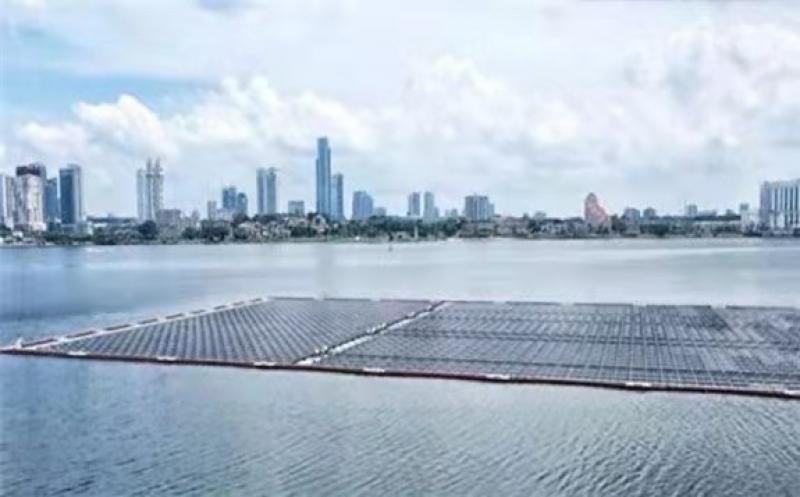Singapore, a small and resource-scarce city-state, is now home to one of the world’s largest offshore floating solar PV farms, a 5 MW-peak project that’s been deployed in the Straits of Johor.
 Image credit: Sunseap
Image credit: Sunseap
Developed by Sunseap Group, a solar energy solutions provider in Singapore, the five-hectare sea-based solar plant is equivalent in size to five soccer fields. With 13,312 solar panels, 40 inverters, and more than 30,000 floats, it’s estimated to produce up to 6,022,500 kWh of energy per year, supplying enough power for, 1250 four-room public housing flats on the island and offsetting an estimated 4258 tons of carbon dioxide.
Sunseap selected Huawei to supply its smart string inverters — Huawei SUN2000-90KTL-H2 — to make the floating solar farm more efficient, safer, and more reliable. The inverters have been tested and proved their resilience to Singapore’s warm weather conditions. The inverters went through a series of tests for salt corrosion and heat dissipation, demonstrating their resilience to harsh environments and temperatures ranging from –55°C to 80°C.
By deploying the inverters, Sunseap has been able to streamline the Operations and Maintenance (O&M) process of the floating platform, as well as prevent rust and general material wear and tear.
Shawn Tan, Vice President of Engineering at Sunseap, said: “The portability of the string inverters was a key feature as it allowed us to install the inverters directly onto the floating platform, next to the PV panels. This eliminated the need for a Direct Current (DC) cable hose and DC combiner boxes, reducing costs and deployment times. Owing to the unique design of the inverters, heat is dissipated more efficiently, increasing the overall reliability of the entire solar PV system.”
The inverters enable Sunseap engineers to conduct daily routine checks remotely.
Unlike inland water bodies, the open sea is subject to a range of conditions and is prone to change, from fluctuations in temperature and rough swells to the corrosive nature of saltwater. Such unfavorable conditions, combined with the biofouling commonly found in warm tropical waters — where microorganisms, plants, algae, and small animals accumulate on surfaces — can potentially accelerate the degradation of PV system components, such as inverters.
Solar PV: A natural next step for Singapore to tackle climate change
Restricted by its small size, Singapore lacks access to natural and renewable energy sources such as wind and hydroelectric power. However, located almost on the equator, Singapore draws a high average annual solar irradiance. Simply put, it gets a lot of sun. As such, one of the key targets under the Green Plan 2030 is to quadruple solar energy deployment to 1.5 GW-peak by 2025, with further plans to reach 2 GW-peak by 2030.
Singapore’s spatial constraints led Sunseap to look offshore, to the open seas, as a viable alternative for renewable energy, ultimately deploying the PV system in coastal waters. In doing so, Sunseap also achieved another milestone: constructing an undersea cable system connecting the floating platform to the mainland, creating a 22 KV electrical distribution network.
The completion of this project and the time it took to get the grid connection will hopefully serve as a blueprint for other land-scarce and densely populated countries in the region to roll out similar initiatives.